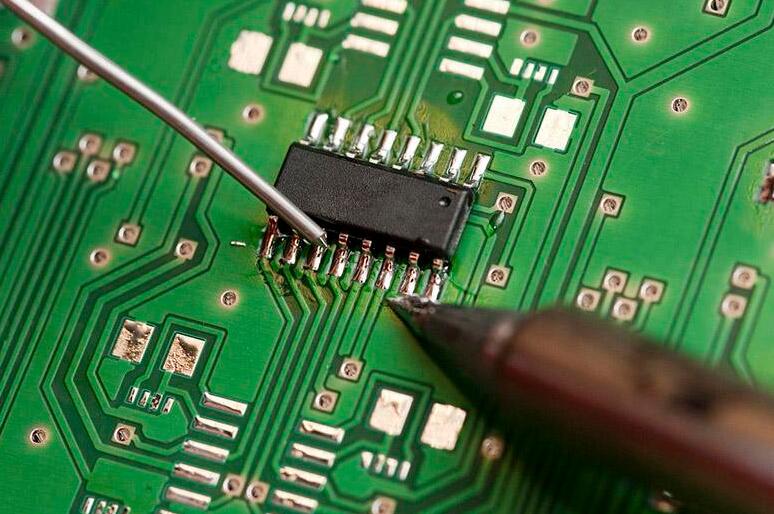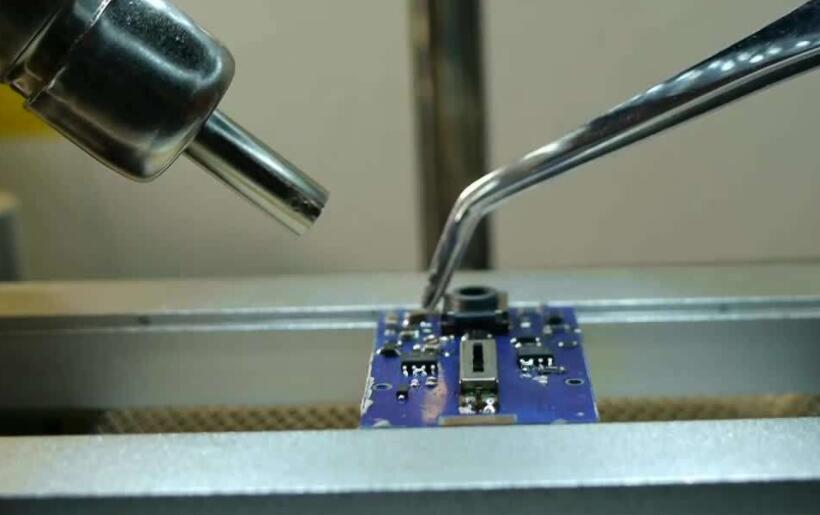One obvious trend in the development of PCB assembly is reflux welding technology. Basically, traditional inserts can also be refluxed, which is commonly referred to as through-hole reflux welding. The advantage is that all solder joints are completed at the same time, which minimizes production costs. However, temperature-sensitive elements limit the use of reflux welding, whether it is an insert or SMD. People turn their attention to selective welding. Selective welding is used after reflux welding in many applications. This is a very effective method.
Process characteristics of selective welding for PCB assembly
The process characteristics of selective welding can be understood by comparing it with wave soldering. The most obvious difference between the two is that the lower part of the PCB Board is completely immersed in liquid solder during peak welding, while only part of the specific area in selective welding is in contact with solder waves. Since the PCB Board itself is a poor heat conduction medium, it will not heat up the solder joints melting the adjacent components and the PCB plate area during welding. Flux must also be pre-coated before welding. Compared with peak welding, flux is only applied to the part to be welded under the PCB assembly, not the whole PCB assembly. In addition, selective welding is only applicable to the welding of insert elements. Selective welding is a new method. A thorough understanding of the selective welding process and equipment is necessary for successful welding.

Selective Welding Process for PCB Assembly
Typical selective welding processes for PCB assemblies include flux spraying, PCB board preheating, dipping, and drag welding.
Preheating process and flux coating process
The flux coating process plays an important role in selective welding. At the end of heating and welding, the flux should be active enough to prevent bridging and oxidation of the PCB multilayer circuit board. Flux spraying The X/Y manipulator carries the PCB multilayer circuit board over the flux nozzle, and the flux is sprayed to the position where the PCB assembly is to be welded. Flux aids can be sprayed in a single nozzle, micro-hole, synchronous multi-point/graphic manner. The most important thing for microwave peak selection after reflux operation is precise spraying of flux. A Micro-hole jet will never contaminate areas outside the solder joints. The minimum flux spot graphic diameter for micro-spot spraying is larger than 2mm, so the accuracy of the location of the flux deposited on the PCB is (+) 0.5mm to ensure that the flux always covers the welded area. The tolerance of the spray welding dose is provided by the supplier. The technical specification should specify the amount of flux used and a 100% safe tolerance range is generally recommended.
Welding Process for PCB Assembly
There are two different processes for selective welding: drag welding and immersion welding.
The selective drag welding process is completed on a single small solder tip soldering tin wave. Drag welding is suitable for welding in very tight spaces on PCB assemblies. For example individual solder joints or pins, single-row pins can be dragged. PCB multilayer circuit boards move over the solder wave of the nozzle at different speeds and angles to achieve the best soldering quality. To ensure the stability of the welding process, the inner diameter of the welding nozzle is less than 6mm. After the flow direction of the solder solution is determined, the solder nozzles are installed and optimized in different directions for different welding needs. Manipulators can approach solder waves from different directions, i.e. from 0 to 12 degrees, so that users can weld various devices on electronic components. For most devices, a slant angle of 10 degrees is recommended.
Compared with the dipping process, the movement of the solder solution and the PCB plate in the drag-and-drop process results in better heat transfer efficiency than in the dipping process. However, the heat required to form a weld connection is transferred by the solder wave, but the solder wave quality of the single nozzle is small, and only the solder wave temperature is relatively high, can the requirements of the drag welding process be met. Example: The soldering temperature is 275 300 C, and the pulling speed is usually acceptable between 10mm/s and 25mm/s. Nitrogen is supplied in the welding area to prevent oxidation of solder waves, which eliminates oxidation, thus avoiding bridge defects in the drag welding process. This advantage increases the stability and reliability of the drag welding process.
With the high precision and flexibility of the machine, the system of module structure design can be completely customized according to the special production requirements of customers and can be upgraded to meet the needs of future product development. The motion radius of the manipulator covers the flux nozzles, preheating, and solder nozzles so that different soldering processes can be completed by the same equipment. The machine-specific synchronous process can greatly reduce the single board process cycle. The ability of the manipulator enables this selective welding to have high precision and high quality. Firstly, the precision positioning ability of the manipulator is highly stable (+0.05mm), which ensures the high repetition and consistency of the parameters of each plate production. Secondly, the 5-Dimensional motion of the manipulator enables the PCB board to contact the tin surface at an optimum angle and orientation to obtain the best welding quality. The tin wave height measuring needle installed on the mechanical hand splint device is made of titanium alloy. The tin wave height can be measured regularly under program control. The tin wave height can be controlled by adjusting the speed of the tin pump to ensure process stability.

Despite these advantages, the single-nozzle solder wave drag welding process also has shortcomings: the solder spraying, preheating and welding process have the longest time. And because the weld points are one-by-one drag welding, with the increase of the number of weld points, the welding time will increase dramatically, and the welding efficiency can not be compared with the traditional peak welding process. But things are changing, and multiple nozzle designs can maximize production. For example, Double-Welded nozzles can double production, and double-nozzles can also be designed for flux.
The submerged selective welding system has multiple solder nozzles and is designed one-to-one to assemble solder joints with PCB. Although less flexible than the manual one, the output is equivalent to the traditional wave soldering equipment, and the cost of the equipment is lower than that of the manual one. Depending on the size of the PCB assembly, single or multiple plates can be transferred in parallel. All solder joints will be sprayed, preheated, and welded in parallel at the same time. However, due to the different distribution of solder joints on different PCB assemblies, special solder nozzles are required for different PCB assemblies. The size of the nozzle is as large as possible to ensure the stability of the welding process without affecting the peripheral adjacent components on the PCB board, which is important and difficult for design engineers because the stability of the process may depend on it.
With the immersion selective welding process, 0.7mm~10mm welded joints can be welded. The short pin and small size pads have a more stable welding process, less possibility of bridging, and the distance between adjacent weld edges, devices, and welds should be greater than 5mm. The main purpose of preheating in the selective welding process is to reduce the thermal stress but to remove the solvent pre-drying flux, which makes the flux have the correct viscosity before entering the solder wave. During welding, the heat carried by preheating is not a key factor to the quality of the welding. The thickness of PCB assembly materials, device packaging specifications, and flux type determine the setting of preheating temperature. In selective welding, there are different theoretical explanations for preheating: some process engineers believe that PCB Board should be preheated before flux spraying; Another view is that welding does not require preheating. Users can arrange the process of selective welding according to specific conditions.